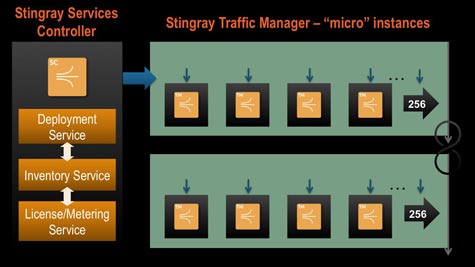As part of an effort to give applications more control over the infrastructure used to host them in the cloud, Riverbed Technology today at the Interop 2013 conference unveiled the Stingray Services Controller, a next-generation instance of the virtual application delivery controller (ADC) that Riverbed gained when it acquired Zeus Technology in 2011.
According to Kavitha Mariappan, director of product marketing for the Riverbed Stingray business unit, a virtual instance of an ADC will enable IT organizations to deploy application delivery controller as a service (ADCaaS) in way that gives each cloud application its own ADC, rather than having to share a single physical ADC across multiple applications.
That approach, says Mariappan, will allow IT organizations to automate the deployment of ADCs, which ultimately will result in faster deployment of applications in either public or private cloud computing scenarios.
To address the different characteristics of various applications, the Stingray Services Controller can be configured in what Riverbed calls “micro instances” of the Stingray Traffic Manager, which can dynamically scale in size to support applications as they grow. In addition, Mariappan says this approach allows ADC technology to be more granularly applied to hyper-elastic cloud applications that tend to be composed of highly distributed objects.
In contrast, it can take days to deploy a physical ADC, and even then there is a lot of contention for physical ADC resources that need to be managed.
As time goes on, it is becoming increasingly clear that entire networks, much like servers, are evolving into virtual resources that will ultimately change both how the network and the entire stack of IT services that depend on them are delivered.
That has some obvious implications concerning not only the degree to which application developers will be able to control the network, but also the role of the network administrators being asked to manage it.



